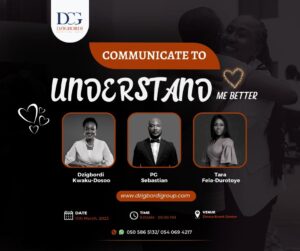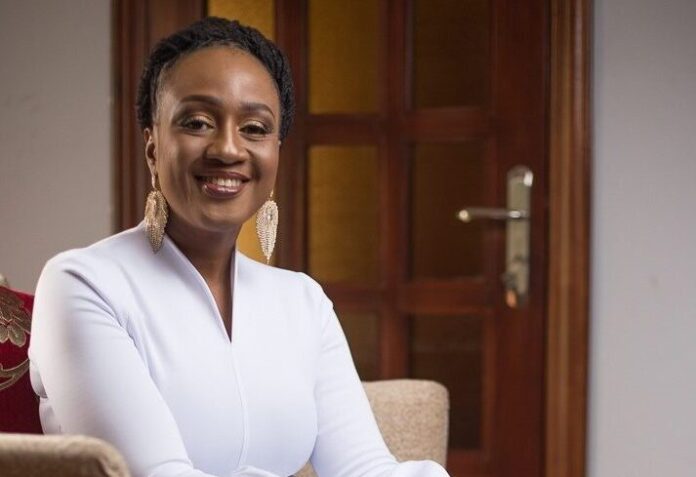Have you ever found yourself in a conversation with someone where you’re both talking, but neither of you seems to be truly listening? Maybe you’re distracted by your own thoughts, or maybe the other person’s words are going in one ear and out the other. Whatever the reason, it can be frustrating to feel like you’re not really connecting with someone else. And yet, this is a common experience for many of us. In fact, research shows that most people spend about 70-80% of their waking hours in some form of communication. Despite all this communication, however, it can be surprisingly difficult to truly understand and be understood by others. That’s why effective communication is so crucial to building strong, healthy relationships. Whether you’re trying to connect with friends, family members, coworkers, or even strangers, the way you communicate can make all the difference in how well you’re able to understand each other.
This insightful paragraph from the Harvard Business Review sheds some light on why communication is so important. “In the age of knowledge, ideas are the foundation of success in almost every field. You can have the greatest idea in the world, but if you can’t persuade anyone else to follow your vision, your influence and impact will be greatly diminished. And that’s why communication is no longer considered a “soft skill” among the world’s top business leaders. Leaders who reach the top do not simply pay lip service to the importance of effective communication. Instead, they study the art in all its forms — writing, speaking, presenting — and constantly strive to improve on those skills. For example, while Jeff Bezos was building Amazon, he put a premium on writing skills. In the summer of 2004, he surprised his leadership team and banned PowerPoint. He replaced slides with “narratively structured memos” that contained titles and full sentences with verbs and nouns. Bezos is not alone among top leaders. “You cannot over-invest in communication skills — written and oral skills,” says former PepsiCo CEO Indra Nooyi, who now serves on Amazon’s board. “If you cannot simplify a message and communicate it compellingly, believe me, you cannot get the masses to follow you.””
I believe that effective communication is critical for building relationships and achieving success at the workplace. However, there are several common communication barriers that can hinder understanding and make it difficult for people to connect with one another. Let’s explore these barriers in more detail.
Firstly, language barriers can be a significant hurdle to effective communication. When people speak different languages or have different dialects or regional accents, it can be challenging to understand one another. It is essential to take the time to listen carefully and ask clarifying questions to ensure that you are on the same page.
Secondly, cultural barriers can arise when people from different cultures have different communication styles, norms, and values. To overcome these barriers, it is crucial to be aware of your own cultural biases and to take the time to learn about other cultures. Building cultural competence can help you communicate effectively with people from different backgrounds.
Thirdly, emotions can also be a barrier to effective communication. When people are angry, upset, or frustrated, they may have difficulty expressing themselves clearly, and their emotions can cloud their judgment. It is essential to take a step back and calm down before engaging in difficult conversations. It can also be helpful to use “I” statements to express how you feel, rather than blaming or attacking the other person.
Finally, perceptual barriers refer to the different ways that people perceive and interpret information. People have unique backgrounds, experiences, and perspectives that shape the way they see the world. These differences can create misunderstandings and make it difficult to communicate effectively. It is essential to practice active listening and to seek to understand the other person’s perspective before responding.
I believe that empathy and understanding others’ perspectives are essential in building strong relationships. Empathy means putting yourself in someone else’s shoes and seeing things from their perspective. This is important because it helps us to better understand and relate to others, which is critical for building trust, respect, and mutual understanding.
When we are empathetic, we can connect with others on a deeper level and respond in a way that shows that we care. For example, if a friend is going through a difficult time, instead of dismissing their concerns, we can empathize with them, listen to them, and offer support. This creates a sense of connection and builds a stronger bond between us.
Understanding others’ perspectives is also crucial for effective communication and collaboration. When we understand where someone is coming from, we can communicate more effectively and avoid misunderstandings and conflict. For example, in a workplace setting, if we take the time to understand our colleagues’ perspectives, we can work more collaboratively and achieve better outcomes.
Moreover, empathy and understanding can help us to navigate cultural differences and promote diversity and inclusion. By understanding and respecting others’ perspectives, we can create a more welcoming and inclusive environment that values and celebrates differences.
If you’re looking to build deeper connections with others, it’s important to focus not just on how well you’re able to understand them, but also on how well they’re able to understand you. Here are some effective communication strategies that can help you convey your thoughts and feelings more clearly, and increase the chances that others will truly understand where you’re coming from:
- Practice Active Listening
Active listening involves giving the other person your full attention and making a conscious effort to understand what they’re saying. This means avoiding distractions like your phone or other devices, maintaining eye contact, and using verbal cues like nodding or saying “mm-hmm” to indicate that you’re engaged in the conversation. Active listening also involves asking open-ended questions and paraphrasing what the other person has said to ensure that you’ve understood them correctly. In a study published in the Journal of Counseling Psychology, researchers found that active listening was associated with higher levels of relationship satisfaction among couples (Doss et al., 2009).
- Be Clear and Concise
When you’re trying to convey a message, it’s important to be as clear and concise as possible. This means avoiding vague or ambiguous language, and being direct and to the point. It can also be helpful to use concrete examples or anecdotes to illustrate your point, and to avoid overly technical or jargon-heavy language that might be confusing to others. In a survey of 400 employees, researchers found that unclear communication was the top contributor to workplace stress (Holmes, 2009).
Research has also found that people are more likely to be persuaded by clear and concise messages than by complex or ambiguous messages. In one study, researchers found that participants were more likely to donate money to a charity when the donation request was presented in a clear and concise manner (Oppenheimer et al., 2009).
- Use Nonverbal Communication
Nonverbal communication can be just as important as what you say with words. Your body language, facial expressions, and tone of voice can all convey important information about your thoughts and feelings. To help others understand you better, try to be aware of your nonverbal cues and make sure they’re consistent with the message you’re trying to convey. research has found that nonverbal cues such as eye contact, facial expressions, and tone of voice can influence how others perceive us and can impact the success of our interpersonal interactions (Keltner & Haidt, 1999).
- Be Mindful of Timing and Context
Effective communication isn’t just about what you say, but also about when and where you say it. Be mindful of the timing and context of your communication, and adjust your message accordingly. For example, it might not be appropriate to share certain personal details in a professional setting, or to discuss sensitive topics in front of a large group. A study published in the Journal of Social and Personal Relationships found that individuals who were better at recognizing and adjusting to the situational context of a conversation were more likely to have successful social interactions (Waldron & Appel, 2017)
By using these communication strategies, you can increase the chances that others will truly understand you and what you’re trying to say. However, it’s also important to recognize that effective communication is a two-way street.
Join us for a Communication Summit where we’ll explore the art of
effective communication that gets people to understand you. This event will
feature expert speakers and thought leaders who will share their insights on how to improve your communication skills, both personally and professionally.
Whether you’re a business leader looking to improve team communication, a teacher seeking new techniques for engaging students, or simply someone who wants to improve personal relationships, this summit has something for everyone.
In addition to our expert speakers, the Communication Summit will provide
opportunities for attendees to network and connect with like-minded individuals
who are passionate about communication.
Don’t miss out on this exciting opportunity to improve your communication skills and connect with others who share your passion. Register today to secure your spot at the Communication Summit. We can’t wait to see you there!











